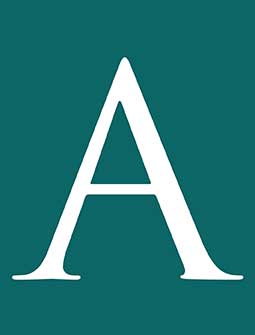
The IRS issued a long-awaited package of guidance regarding the Sec. 163(j) limitation on business interest expense deductions. The guidance includes final and proposed regulations as well as a proposed revenue procedure with a safe harbor for operators of qualified residential living facilities and FAQs on the aggregation rules for determining a taxpayer’s gross receipts for purposes of the small business exception to the business interest expense limitation. The business interest expense limitation was enacted in the law known as the Tax Cuts and Jobs Act, P.L. 115-97, and amended by the Coronavirus Aid, Relief, and Economic Security (CARES) Act, P.L. 116-136.
Under Sec. 163(j), for tax years beginning after Dec. 31, 2017, business interest expense deductions are limited to the sum of:
- The taxpayer’s business interest income;
- 30% (or 50% for 2019 and 2020, as amended by the CARES Act) of the taxpayer’s adjusted taxable income (ATI); and
- The taxpayer’s floor plan financing interest expense.
In a change made by the CARES Act, taxpayers can elect to use their 2019 ATI in computing the 2020 limit, helping taxpayers whose income declines in 2020. Taxpayers are also permitted to elect to apply the more restrictive 30%-of-ATI limit.
The business interest expense deduction limitation does not apply to certain small businesses whose gross receipts are $26 million or less, electing real property trades or businesses, electing farming businesses, and certain regulated public utilities. The $26 million gross receipts threshold, which applies for the 2020 tax year, is adjusted annually for inflation.
Final regulations
The 575-page final regulations (T.D. 9905) address how to calculate the interest expense limitation, what constitutes interest for purposes of the limitation, which taxpayers and trades or businesses are subject to the limitation, and how the limitation applies to consolidated groups, partnerships, internationally, and in other cases. They finalize, with some changes, proposed regulations (REG-106089-18) that were issued in 2018. The IRS received approximately 120 comments on the proposed regulations and made some changes based on those comments.
The 2018 proposed regulations contained a broad definition of business interest, which the IRS in the preamble to the called a “complete definition of interest that addresses all transactions that are commonly understood to produce interest income and expense, including transactions that otherwise may have been entered into to avoid the application of section 163(j).” In response to comments, the final regulations scale back the definition of interest somewhat, excluding, for example, commitment fees and debt issuance costs from the definition of interest. The IRS also eliminated the proposed regulations’ inclusion of the hedging rules in interest. However, in certain circumstances, the anti-avoidance rules in Regs. Sec. 1.163(j)-1(b)(22)(iv) may apply to require income, deduction, gain, or loss from certain hedging transactions to be taken into account for purposes of Sec. 163(j).
The final regulations also amend the treatment of depreciation, amortization, or depletion when computing ATI.
The final regulations are effective 60 days after they are published as final in the Federal Register (as of this writing, a publication date has not been announced).
Proposed regulations
The proposed regulations (REG-107911-18) provide additional guidance on various business interest expense deduction limitation issues. Specifically, they address the limitation on the deduction for business interest expense generally; how to allocate passthrough entities’ interest expense; dividends paid by regulated investment companies; and how to apply the limitation on the deduction for business interest expense to U.S. shareholders of controlled foreign corporations and to foreign persons with effectively connected income.
They propose modifications to the definition of a real property trade or business for purposes of the passive activity loss rules and the definition of an electing real property trade or business under Sec. 163(j)(7)(B). They also propose rules regarding the definition of a “tax shelter” for purposes of Regs. Sec. 1.163(j)-2 and Sec. 1256(e), as well as rules regarding the election to use 2019 ATI in determining the taxpayer’s Sec. 163(j) limitation for a tax year beginning in 2020. The proposed regulations also make modifications regarding the application of the corporate lookthrough rules to tiered structures.
Taxpayers may rely on some of the rules in these proposed regulations (primarily the regulated investment company provisions) until final regulations implementing the proposed regulations are published in the Federal Register. The IRS requests written or electronic comments and requests for a public hearing be received within 60 days of the date of filing for public inspection with the Federal Register.
Qualified residential living facilities
Notice 2020-59 is a proposed revenue procedure that provides a safe harbor allowing taxpayers engaged in a trade or business that manages or operates qualified residential living facilities to treat that trade or business as a real property trade or business solely for purposes of qualifying as an electing real property trade or business, which is permitted to elect out of the business interest expense limits.
Specifically, the guidance provides that a trade or business that manages or operates a residential living facility that meets the requirements set out in Section 3.01 of the proposed revenue procedure to be a qualified residential living facility will be treated as a real property trade or business for purposes of making the election to be an electing real property trade or business under Sec. 163(j)(7)(B).
The proposed revenue procedure will apply to tax years beginning after Dec. 31, 2017, and the IRS says taxpayers may rely on the safe harbor now. The IRS requests written or electronic comments on the proposal by Sept. 28, 2020.
Aggregation rules
Finally, the IRS posted FAQs on the aggregation rules that apply for purposes of the $26 million-or-less gross receipts test that applies to determine whether a taxpayer is a small business that is exempt from the business interest expense deduction limitation. Separate FAQs address the aggregation rules that apply to corporations, partnerships, trusts, estates, sole proprietorships, and affiliated service groups.
— Sally P. Schreiber, J.D., (Sally.Schreiber@aicpa-cima.com) is a Tax Adviser senior editor.
Leave a Reply